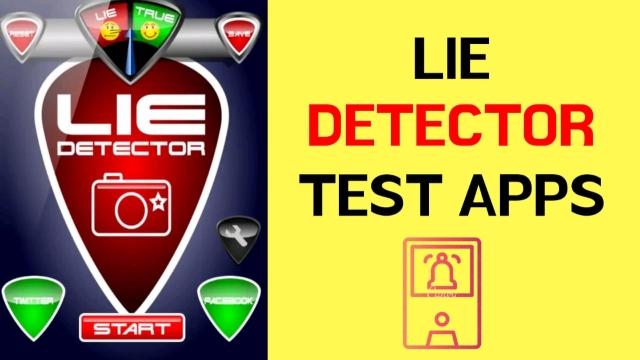
In a world where truth and lies often dance a delicate tango, the lie detector test stands as a tool designed to unmask the deceptive twists and turns of the human mind. Also known as a polygraph exam, this test has long captured the imagination of both the curious and the skeptical. The idea of a machine capable of revealing hidden truths, of delving into the murky depths of deception, has a certain allure that transcends cultures and time.
History of Lie Detector Tests
Lie detector tests, also known as polygraph tests, have a fascinating history dating back to the early 20th century. The first primitive lie detectors were developed by physiologist William Moulton Marston in the 1910s. Marston’s invention paved the way for the modern polygraph machine that we are familiar with today.
Despite its controversial nature, the lie detector test gained popularity in the legal and law enforcement fields in the mid-20th century. It was heralded as a groundbreaking tool in uncovering deception and extracting the truth from suspects and witnesses. The technology behind these tests continued to advance, making them more accurate and reliable in detecting lies.
How Lie Detector Tests Work
Lie detector tests, also known as polygraphs, measure various physiological indicators such as blood pressure, heart rate, respiration, and skin conductivity in response to questions. The underlying assumption is that deception causes changes in these parameters, which can be detected and analyzed.
During a lie detector test, the subject is first asked a set of baseline questions to establish normal physiological responses. Subsequent questions are then asked, including specific ones related to the issue being investigated. The examiner monitors the physiological responses to determine patterns that may indicate deception.
Polygraph examiners interpret the data collected during the test to identify any significant deviations from the baseline readings. Factors such as the timing of responses, the consistency of physiological reactions, and the overall pattern of responses play a crucial role in determining the likelihood of deception. It is important to note that while lie detector tests can be a valuable tool, they are not foolproof and should be used in conjunction with other investigative techniques.
Limitations and Controversies
Lie detector tests are not foolproof and have faced criticism for their reliability. Some argue that the results can be influenced by external factors such as an individual’s nervousness or anxiety during the test, leading to inaccurate readings. Additionally, there is the concern that skilled liars can manipulate their physiological responses to deceive the test, casting doubt on its effectiveness.
Lie detector exam
Another limitation of lie detector tests is their inability to differentiate between intentional deception and genuine stress or fear. Individuals who are telling the truth but are anxious or nervous may show signs of deception according to the test results, leading to possible misinterpretation. This raises questions about the test’s accuracy in discerning truth from falsehood in all scenarios.
Controversy also surrounds the use of lie detector tests in legal and employment settings. Critics argue that relying on such tests as conclusive evidence can lead to false accusations and unjust outcomes. Furthermore, the ethical implications of using a test that is not universally accepted as reliable have sparked debates about the fairness and validity of incorporating lie detector results into decision-making processes.

